THE BIG BANG: The too-short career of actress JOY BANG
The post-Easy Rider period of American filmmaking had its share of sunshiny, no-hassle, bra-burning actresses, but few mastered the cialis online us combo of cute and carefree as did Joy Bang. While far from a household name, her brief filmography was always interesting, replete with visionaries like Andrew Meyer, Woody buy online pharmacy viagra Allen, Roger Vadim, Norman Mailer and the husband-wife duo of Jack Bond and Jane Arden. Most of her well-known films didn’t give her many lines, or anything more than a decorative role, but Bang had an undeniable onscreen charm marked by a wide smile, a scratchy voice and a sense of the spontaneous. Not to buying generic cialis mexico rx mention a name that was hard to forget.
Bang’s professional career began in Boston, where she became the favored star of underground director Andrew Meyer. “She was one of the girls for whom the term ‘teenybopper’ was coined as a result of her appearance in Andy Meyer’s superb An Early Clue to the New Direction,” recalls film critic David Ehrenstein. In viagra now the mid-60s, Meyer was at the center of a burgeoning avante garde filmmaking scene that included the likes of Bruce Conner, Tom Chomont, Fred Camper and Saul Levine. While all but forgotten now, Meyer’s 1966 featurette An Early Clue to the New Direction (its title a facetious reference to a scene in A Hard Day’s Night) won first place at the prestigious Ann Arbor Film Festival in 1967. The rambling film starred Joy Bang, with her long blonde tresses and obligatory mid-60s fringe, as one third of a bizarre love triangle that also included painter, poet and Factory star Rene Ricard, and his lover, played by elderly raconteur Prescott Townshend, a sort of Cambridge Quentin Crisp. Townshend was a lifelong gay activist and an early proponent of Boston-area counterculture, which caused him to be embraced by the flower-power set who hung out in Boston Common. The Common bordered the historic neighbourhood of Beacon Hill, where An Early Clue to the New Direction would be shot, and where Joy Bang lived (coincidentally, on Joy Street) with her husband Paul Bang. The film is virtually plotless and shot without live sound, but exists in the leisurely then-present, with the trio drinking tea, riding bikes and featuring the Unidentified Flying Objects performing ‘I’m a Woman’ in between Townshend’s captivating monologues. The film is an early example the kind of low budget, improvisational filmmaking that would come to dominate the East Coast underground scene; like the work coming out of Warhol’s Factory at the same time (Chelsea Girls was also made in 1966), the films were a means of determining star power, fuelled more by the exploding charisma of the onscreen talent than either professionalism or the tangible construction of a story.
There was much interchange between New York and Boston at the time, and ties to the Warhol camp were numerous. Aside from their mutual casting of Rene Ricard, Meyer had appeared as an actor in Warhol’s 1963-1964 film series Kiss, and Warhol had narrated Meyer’s 1966 film Match Girl (an early bio-pic of self-destructive Boston-native Edie Sedgwick). But after Meyer’s follow-up to An Early Clue to a New Direction – another short called Flower Child (1966) starring Joy Bang – failed to impress critics as his debut had done (Bang’s performance is referred to as “laboured” in James Stoller’s village voice review)[i], Bang made the move to New York, where a run-in with The Who may have prompted a brief sojourn overseas.
In 1967, The Who were doing nine dates on a Murray the K show at New York’s RKO theatre, billed as Music In The Fifth Dimension. It was their first visit to the US and their blistering, stage-obliterating act causing a well-deserved frenzy in the audience. It was during this slate of shows – which also featured Mitch Ryder, Wilson Pickett and Cream, the latter also making their stateside debut – that Joy Bang met Keith Moon. “Murray the K’s wife was on the program,” recalled Pete Townshend in a Hit Parader article from later that year, “She appeared about ten times in a fashion spot with teenybopper girl models – Jackie the K and her fabulous fashion show. The most presentable of the models was a girl called ‘Joy Bang,’ who took a liking to Keith which I think was mutual until she said, ‘You must meet my husband, Paul Bang!’”[ii]
It’s uncertain what transpired between Bang and Moonie over these nine days and how that impacted her marriage, but somewhat fittingly, Bang’s next picture would be Separation, shot in London with the esteemed experimental husband-wife duo of Jack Bond and Jane Arden[iii]. Arden, who would later form the radically feminist Holocaust Theatre Troupe, stars as a recently-separated older woman who takes up with a dashing young American hipster and the two act out immature fantasies. It’s a weird blend of the highly emotional states of anxiety that dominate Arden’s surreal later film The Other Side of the Underneath, mixed with the zaniness of late 60s British cinema like The Knack…and how to get it (coincidentally, Arden did co-write a TV comedy with Richard Lester in 1955 called Curtains for Harry). Joy Bang plays a woman in a bathhouse, one of the few clothed actresses in a surreal scene where nude women sit still in identical poses and other are massaged and slapped while they talk about their feelings of loneliness. Bang later comments on the emotional torture that others are inflicting on the protagonist, but she is underutilized, just one in a bevy of tantalizing dollybirds.
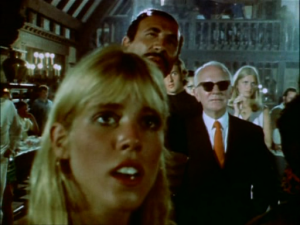 The following summer she was back in New York, and was among the (possibly masochistic) throng who descended upon the upscale resort town of East Hampton, NY as part of the Norman Mailer circus known as Maidstone (1970). It would be Mailer’s fourth film as director and there would be no script, but Mailer’s hope was to create a cataclysmic atmosphere in which the boundary between reality and make-believe were violently transgressed.
The following summer she was back in New York, and was among the (possibly masochistic) throng who descended upon the upscale resort town of East Hampton, NY as part of the Norman Mailer circus known as Maidstone (1970). It would be Mailer’s fourth film as director and there would be no script, but Mailer’s hope was to create a cataclysmic atmosphere in which the boundary between reality and make-believe were violently transgressed.
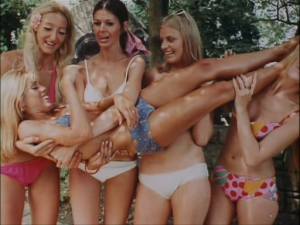
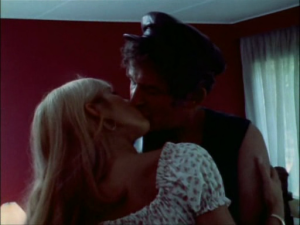 Mailer plays megalomaniacal movie director Norman T. Kingsley, who is casting a new film in tandem with launching a presidential campaign. Journalists, political advisors, targeted voters, ex-wives and wannabe actors and actresses all spend the next five days in a state of collective madness as the self-important bully sees how far he can push his ‘subjects’. Kingsley directs his hanger-ons to strip, scream, fight or make love with strangers while they all vie to impress their tyrannical leader. Joy Bang is one of the dozen or so actresses who heed the cattle call for Kingsley’s latest free-love art film. While she has a small role, so does everyone else, with the exception of Mailer, the crotchety beast who unfortunately walks around shirtless in nearly every scene. She necks with Kingsley but gasps in fright when he goes for her underpants, thankfully sparing us a grotesque love scene.
Mailer plays megalomaniacal movie director Norman T. Kingsley, who is casting a new film in tandem with launching a presidential campaign. Journalists, political advisors, targeted voters, ex-wives and wannabe actors and actresses all spend the next five days in a state of collective madness as the self-important bully sees how far he can push his ‘subjects’. Kingsley directs his hanger-ons to strip, scream, fight or make love with strangers while they all vie to impress their tyrannical leader. Joy Bang is one of the dozen or so actresses who heed the cattle call for Kingsley’s latest free-love art film. While she has a small role, so does everyone else, with the exception of Mailer, the crotchety beast who unfortunately walks around shirtless in nearly every scene. She necks with Kingsley but gasps in fright when he goes for her underpants, thankfully sparing us a grotesque love scene.
Maidstone was an unmitigated disaster most famous for an unplanned tussle between Mailer and actor Rip Torn, but it further emphasized that Bang knew how to pick her material for the maximum combination of visibility and street cred. Now she just needed a bigger role to show her chops and get her career moving. She would find it with Fred Baker’s Events (1970).
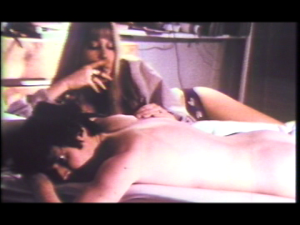 Fred Baker was an aspiring New York filmmaker whose side gig was making porno loops for a mobster named Spanish Louey. Convincing said mobster that he could pull off a legit film for equal profits, he borrowed $25K, at risk to his actual life and limbs, to make Events, a “totally improvised dramatic street feature”[iv] in which the actors would play a version of themselves while the self-reflexive script depicts a wannabe directing team turning to porn as a means of financing a documentary about Lenny Bruce.
Fred Baker was an aspiring New York filmmaker whose side gig was making porno loops for a mobster named Spanish Louey. Convincing said mobster that he could pull off a legit film for equal profits, he borrowed $25K, at risk to his actual life and limbs, to make Events, a “totally improvised dramatic street feature”[iv] in which the actors would play a version of themselves while the self-reflexive script depicts a wannabe directing team turning to porn as a means of financing a documentary about Lenny Bruce.
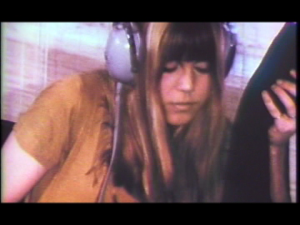 Like Larry Kent’s High (1967), the film blends neorealist-inspired conversational sequences with psychedelic double exposures and the gyrating nightclub scenes of the anarchic free-love milieu. Relationships are tender but also transient, and Joy Bang plays an actress who finds herself at an emotional crossroads when her sexual boundaries are called into question by her filmmaking boyfriend’s pornographic endeavors. Joy accuses her boyfriend Ryan of ‘selling out’, and encourages him to take some time to earn his place in the business instead of rushing into a morally questionable (and then-illegal) diversion. He changes the subject, but when she comes home and finds their roommate Frank taking photos of a naked model, she knows they’re planning the shoot with or without her approval. It’s an unfashionable time to be a monogamous girlfriend.
Like Larry Kent’s High (1967), the film blends neorealist-inspired conversational sequences with psychedelic double exposures and the gyrating nightclub scenes of the anarchic free-love milieu. Relationships are tender but also transient, and Joy Bang plays an actress who finds herself at an emotional crossroads when her sexual boundaries are called into question by her filmmaking boyfriend’s pornographic endeavors. Joy accuses her boyfriend Ryan of ‘selling out’, and encourages him to take some time to earn his place in the business instead of rushing into a morally questionable (and then-illegal) diversion. He changes the subject, but when she comes home and finds their roommate Frank taking photos of a naked model, she knows they’re planning the shoot with or without her approval. It’s an unfashionable time to be a monogamous girlfriend.
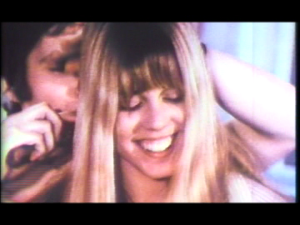 Joy walks out during the porno shoot – a kaleidoscopic showstopper with rapid editing, lush swaths of colour, writhing bodies and pulsating sound design – questioning her own ability to “be free”. But her real-life stopover in London during Separation becomes a reference point in the inevitable confrontation. “In your mind, Ryan, I got upset because of a little nudity,” she says. “But when I was in London I lived with The Stones and people were nude all the time and it didn’t bother me.” Within the counterculture in full swing, Baker goes against the grain and exposes free love as less ‘free’ than forced.
Joy walks out during the porno shoot – a kaleidoscopic showstopper with rapid editing, lush swaths of colour, writhing bodies and pulsating sound design – questioning her own ability to “be free”. But her real-life stopover in London during Separation becomes a reference point in the inevitable confrontation. “In your mind, Ryan, I got upset because of a little nudity,” she says. “But when I was in London I lived with The Stones and people were nude all the time and it didn’t bother me.” Within the counterculture in full swing, Baker goes against the grain and exposes free love as less ‘free’ than forced.
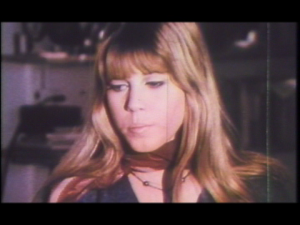 When the film first screened at New York’s Elgin theatre, Barney Rossett of Grove Press loved it and bought it on the spot for $300,000. “Spanish Louey was extremely happy,” said Baker, “so were my arms and legs!” But Baker wasn’t the only one to benefit from the film’s unexpected success. With the Grove Press/Evergreen press machine behind it, Events got maximum exposure nationwide, with a tie-in movie book and a cover story in The Evergreen Review that saw Joy Bang’s face plastered all over US newsstands. The next logical step: the West Coast.
When the film first screened at New York’s Elgin theatre, Barney Rossett of Grove Press loved it and bought it on the spot for $300,000. “Spanish Louey was extremely happy,” said Baker, “so were my arms and legs!” But Baker wasn’t the only one to benefit from the film’s unexpected success. With the Grove Press/Evergreen press machine behind it, Events got maximum exposure nationwide, with a tie-in movie book and a cover story in The Evergreen Review that saw Joy Bang’s face plastered all over US newsstands. The next logical step: the West Coast.
While her first LA jobs were one-time cameos on shows like The Young Lawyers and Mission Impossible, she almost walked right into her own series, with the Don Kirshner-Ernie Pintoff production The Kowboys (1970). After being ousted from The Monkees and getting revenge with the Saturday Morning success of The Archies, Kirshner wanted to try his hand at another live-action musical comedy, this time set in the Wild West. Among the members of the eponymous frontierland singing group were Boomer Castleman and Michael Martin Murphey – aka Boomer Clarke and Travis Lewis of the Lewis and Clarke Expedition – and Joy Bang as the sole female member, Smitty. “All I remember about Joy is that she had a crush on Michael Martin Murphey,” recalls Castleman. “She was very professional, as she had more film experience than the rest of us.”[v] But Kirshner missed the mark, and the show was never picked up.
She also had a meaty role in the pilot for short-lived TV series The Psychiatrist (1970). The episode was directed by Darryl Duke, whose later masterpiece Payday starred Rip Torn of Maidstone infamy. Pete Duel plays Casey Poe, recently released from serving time on a drug charge. Chased by the cops after scoring (from slimy diminutive character actor Michael C. Gwynne of Payday) he runs into a church where the Staple Singers are playing, has a freakout and calls his drug counsellor (Roy Thinnes). While the film focuses on this violent, pathological, misogynistic character battling his addiction, he joins Thinnes to the small beach community of San Sebastien and discovers that the entire youth scene is overrun with heavy narcotics. Joy Bang plays spacy teenager Kendell, a recreational intraveanous amphetamine user who is wooed by the mysterious stranger, and easily impressed by his fake stories about being pals with Malcolm X and Big Bill Broonzy. When Casey suddenly turns on her, she trips out on LSD and has a screaming fit, but eventually her vulnerability makes Casey have a breakthrough of his own. Sadly Pete Duel committed suicide within the next year, followed shortly thereafter by co-star Barry Brown.
Like actress Mimsy Farmer, whose counterculture status was cemented by a bleach blonde mop-top, Bang’s career is marked by two distinct periods separated by a haircut. In 1971, she got the shag haircut first popularized by a 1970 arrest photo of Jane Fonda (shortly after the wrap of Klute), but few wore it as well as Joy Bang, who had already been billed in the press as a “half-Lolita, half-Jane Fonda type”[vi]. The haircut made Bang stand out from the legion of California girls and was enough to earn her the status of in-demand character actress.
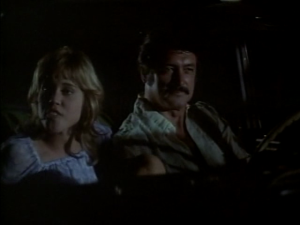
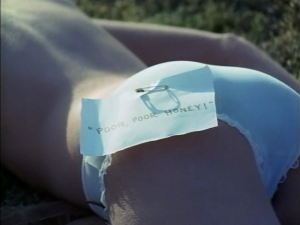 The Jane Fonda comparisons also likely caught the attention of director Roger Vadim – then Fonda’s husband – who cast Bang as one of the lithesome girls of Oceanfront High School in Pretty Maids All in a Row (1971), which was produced and co-written by a post-Star Trek Gene Roddenberry. Vadim’s libidinal fantasy murder-comedy gives new meaning to the word bodycount; Rock Hudson is the mustachioed school guidance counsellor who, despite being married to the gorgeous Barbara Leigh (of The Student Nurses), makes it with all the female students, including thumb-sucking cheerleader Joy Bang. He encourages new teacher Miss Smith (Angie Dickinson) to follow suit, urging her to help virginal student Ponce de Leon Harper (John David Carson, son of western actor Kit Carson) overcome his “impotency problem”. When the female students start turning up dead, it appears there’s a serial killer on campus, and before long, Bang is found dead in the football field, with a note saying “poor, poor honey!” taped to her rear end and a smile across her face.
The Jane Fonda comparisons also likely caught the attention of director Roger Vadim – then Fonda’s husband – who cast Bang as one of the lithesome girls of Oceanfront High School in Pretty Maids All in a Row (1971), which was produced and co-written by a post-Star Trek Gene Roddenberry. Vadim’s libidinal fantasy murder-comedy gives new meaning to the word bodycount; Rock Hudson is the mustachioed school guidance counsellor who, despite being married to the gorgeous Barbara Leigh (of The Student Nurses), makes it with all the female students, including thumb-sucking cheerleader Joy Bang. He encourages new teacher Miss Smith (Angie Dickinson) to follow suit, urging her to help virginal student Ponce de Leon Harper (John David Carson, son of western actor Kit Carson) overcome his “impotency problem”. When the female students start turning up dead, it appears there’s a serial killer on campus, and before long, Bang is found dead in the football field, with a note saying “poor, poor honey!” taped to her rear end and a smile across her face.
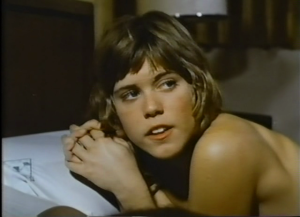
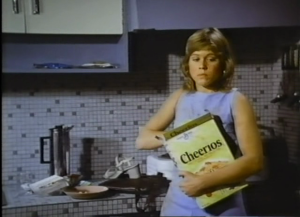 By the early 70s, Bang’s original director Andrew Meyer had made his way to the west coast too, and was working for Roger Corman doing unlikely exploitation fodder. When given the chance to write and direct a feature called Night of the Cobra Woman (1972), he knew who he wanted for the lead. “It doesn’t surprise me that Andy kept returning to Joy, they were close friends had similar ambitions to make important new narratives and to make it in the movies,” says Saul Levine. Night of the Cobra Woman is many things, but sadly, an ‘important new narrative’ is not one of them. The film would mark Joy Bang’s final collaboration with Meyer and her first leading feature role since Events, but either she’s not up to it or she’s not into it, because her performance is a disaster. She plays a student living in Manila doing research for Unicef, developing anti-venom for snake bites which causes her to cross paths with a predatory snake woman (Marlene Clark of Ganja & Hess) who needs to suck the life out of male victims to stay young forever.
By the early 70s, Bang’s original director Andrew Meyer had made his way to the west coast too, and was working for Roger Corman doing unlikely exploitation fodder. When given the chance to write and direct a feature called Night of the Cobra Woman (1972), he knew who he wanted for the lead. “It doesn’t surprise me that Andy kept returning to Joy, they were close friends had similar ambitions to make important new narratives and to make it in the movies,” says Saul Levine. Night of the Cobra Woman is many things, but sadly, an ‘important new narrative’ is not one of them. The film would mark Joy Bang’s final collaboration with Meyer and her first leading feature role since Events, but either she’s not up to it or she’s not into it, because her performance is a disaster. She plays a student living in Manila doing research for Unicef, developing anti-venom for snake bites which causes her to cross paths with a predatory snake woman (Marlene Clark of Ganja & Hess) who needs to suck the life out of male victims to stay young forever.
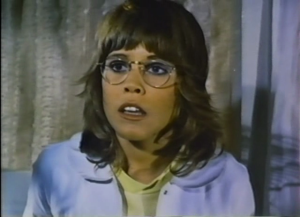 Like many American productions shot in the Philippines, the whole movie is an excuse to take advantage of cheap labour (including Filipino staple Vic Diaz in a dual role) and exploit the local fauna: there are cockfights, an eagle fighting a cobra, and a monkey manhandled in a lab. While the chance to work with an old friend and a free trip to the Philippines were likely incentives for the then-budding actress, it was a potentially crippling move. “That was probably the worst movie I did,” Bang said in a 2009 interview, “but that has a cult following too, oddly enough.”
Like many American productions shot in the Philippines, the whole movie is an excuse to take advantage of cheap labour (including Filipino staple Vic Diaz in a dual role) and exploit the local fauna: there are cockfights, an eagle fighting a cobra, and a monkey manhandled in a lab. While the chance to work with an old friend and a free trip to the Philippines were likely incentives for the then-budding actress, it was a potentially crippling move. “That was probably the worst movie I did,” Bang said in a 2009 interview, “but that has a cult following too, oddly enough.”
Luckily she rebounded from the experience easily, and jumped into a triplicate of films that made 1972 probably the most crucial year of her career [vii]. Bill L. Norton was the son of exploitation screenwriter and political activist William Norton, and his first film Cisco Pike (1972) would be a perfect time capsule of the music and drug scene of Venice and West Hollywood. It would also be a first for the film’s star Kris Kristofferson who played Cisco, a country singer recently-released from prison whose only wish is to go straight and get his career back on track. But jumpy, crooked cop Gene Hackman has other ideas: he wants Cisco to move a hundred keys of pot in 48 hours or else he’s going to frame him and get him sent back to jail. The film takes place over these next few days as Cisco races from one client to the next, while trying to get some studio time in and keep his girlfriend (Karen Black) from thinking he’s a total loser.
Joy Bang plays Lynn, groupie and gal-pal to a visibly pregnant Viva who wants to score off Cisco. Piled into the front seat of a car and loaded down with drugs, the trio have a hilarious run-in with a traffic cop before speeding off for a ménage-a-trois at Viva’s apartment. The duo pop up again later in the film, with Joy getting busy with Cisco’s world-weary (and apparently impotent) musical partner Harry Dean Stanton in the back seat of a car. She later finds him OD’d on smack in the bathroom.
Cisco Pike is one of the most underrated films of the 70s, and would set the character type that Joy Bang would play in her remaining films – the freewheeling adorable simpleton. Her next film saw her back in Beantown for Dealing: Or the Berkeley-to-Boston Forty-Brick Lost-Bag Blues (1972), directed by Paul Williams (not to be confused with either the diminutive pop icon or the Crawdaddy mag founder) and based on the book by Michael and Douglas Crighton (writing collectively as Michael Douglas).
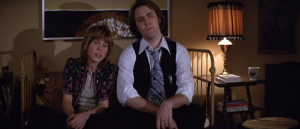
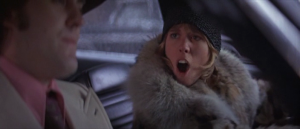 Joy plays Sandy, the bubbly, put-upon girlfriend of cigar-chomping dandy Boston drug dealer John (John Lithgow), who hires Harvard dropout Peter (Robert F. Lyons) as a mule for a cross-country shipment of grass. While in Berkeley, Peter falls for easygoing stoner chick (Barbara Hershey) and arranges for her to courier the next shipment so that they can continue their budding romance. But when she is arrested on arrival and one of the two suitcases goes missing, the group is thrust into a downbeat crime story involving the Cuban mafia and a crooked cop, continuing on the anti-authoritarian suspicions of Cisco Pike.
Joy plays Sandy, the bubbly, put-upon girlfriend of cigar-chomping dandy Boston drug dealer John (John Lithgow), who hires Harvard dropout Peter (Robert F. Lyons) as a mule for a cross-country shipment of grass. While in Berkeley, Peter falls for easygoing stoner chick (Barbara Hershey) and arranges for her to courier the next shipment so that they can continue their budding romance. But when she is arrested on arrival and one of the two suitcases goes missing, the group is thrust into a downbeat crime story involving the Cuban mafia and a crooked cop, continuing on the anti-authoritarian suspicions of Cisco Pike.
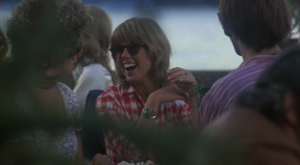 While these roles seem ornamental to a certain extent, the most dismissive might be her turn as Julie in Woody Allen’s Play it Again, Sam (1972). Directed by future Footloose director Herbert Ross from Allen’s stage play (a poster for which appears in Cisco Pike), Allen plays Allan Felix, a classic Hollywood-obsessed film reviewer whose wife splits, leaving him to have imaginary conversations with guardian angel Humphrey Bogart. Heeding shadow-Bogey’s advice that “There’s plenty of dames in the world, all you have to do is whistle,” Allan tries to bury his feelings of dejection with some carnal experiments of his own. Of course, he strikes out at every turn (even Viva, who plays an admitted nymphomaniac, spurns him). With his smug pal Tony Roberts as a go-between, he manages to swing a date with Julie (Joy Bang). “Let’s go in there and get stoned and watch the freaks!” she says to Allan, convincing him to go into a dive bar where they are promptly set upon by greasy bikers who beat up Allan and abduct Julie. Sadly this is one of few lines she gets in the film, treated as she is like just one in a catalogue of women Allan ceases to impress.
While these roles seem ornamental to a certain extent, the most dismissive might be her turn as Julie in Woody Allen’s Play it Again, Sam (1972). Directed by future Footloose director Herbert Ross from Allen’s stage play (a poster for which appears in Cisco Pike), Allen plays Allan Felix, a classic Hollywood-obsessed film reviewer whose wife splits, leaving him to have imaginary conversations with guardian angel Humphrey Bogart. Heeding shadow-Bogey’s advice that “There’s plenty of dames in the world, all you have to do is whistle,” Allan tries to bury his feelings of dejection with some carnal experiments of his own. Of course, he strikes out at every turn (even Viva, who plays an admitted nymphomaniac, spurns him). With his smug pal Tony Roberts as a go-between, he manages to swing a date with Julie (Joy Bang). “Let’s go in there and get stoned and watch the freaks!” she says to Allan, convincing him to go into a dive bar where they are promptly set upon by greasy bikers who beat up Allan and abduct Julie. Sadly this is one of few lines she gets in the film, treated as she is like just one in a catalogue of women Allan ceases to impress.
After this tryptich of films, Joy Bang should have been on the rise; instead, her career seemed to wind down. A possibly apocryphal story has her ‘blacklisted’ as a result of an association with actress Katherine Hepburn. Film critic David Ehrenstein has been a major proponent of this story[vii], claiming that “she was a rising starlet in Hollywood until Katherine Hepburn became terribly superfond of her (and you can feel free to ladle in as much innuendo as you want) and demanded that she be cast as the hippie girl in Travels with My Aunt. When the producers passed on Joy in favor of Cindy Williams, Hepburn walked off the picture during pre-production. She was replaced by Maggie Smith. Cukor was, to put it mildly, very annoyed and it nearly destroyed their friendship.”[viii] As to why a stamp of approval from screen icon Katherine Hepburn would be damaging, Ehrenstein says “It appears that when Hepburn ditched Travels with My Aunt because of her, the studios saw her as a ‘troublemaker’. But I also believe she was by that time fed up with show business and was glad to leave.” [ix]
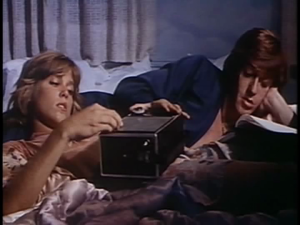
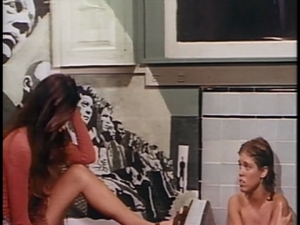 Still, she had one last iconic role to impart before she split, and that was in Messiah of Evil (1973), the debut of husband/wife duo Willard Huyck and Gloria Katz (who also wrote that year’s American Graffiti). Released only in oversaturated no-name VHS releases before Code Red gave it the star treatment for DVD in 2009, Messiah of Evil is without doubt one of the most unique efforts of the early 70s American horror boom, largely because it seems to transpose the aesthetics of the European art film onto the commercial ambitions of American exploitation. Marianna Hill plays Arletty, who comes to the small seaside town of Point Dune looking for her missing father, a reclusive painter. While she doesn’t find him upon arrival, she does find overshadowing remnants of him – occult-obsessed diary entries, large creepy murals adorning all the walls of the house – and his reputation has attracted a bohemian art collector Thom and his two nymphette travelling companions – the sultry Anitra Ford and the tomboyish Joy Bang as Toni, who is described by Thom as “half girl, half child and half-wit”.
Still, she had one last iconic role to impart before she split, and that was in Messiah of Evil (1973), the debut of husband/wife duo Willard Huyck and Gloria Katz (who also wrote that year’s American Graffiti). Released only in oversaturated no-name VHS releases before Code Red gave it the star treatment for DVD in 2009, Messiah of Evil is without doubt one of the most unique efforts of the early 70s American horror boom, largely because it seems to transpose the aesthetics of the European art film onto the commercial ambitions of American exploitation. Marianna Hill plays Arletty, who comes to the small seaside town of Point Dune looking for her missing father, a reclusive painter. While she doesn’t find him upon arrival, she does find overshadowing remnants of him – occult-obsessed diary entries, large creepy murals adorning all the walls of the house – and his reputation has attracted a bohemian art collector Thom and his two nymphette travelling companions – the sultry Anitra Ford and the tomboyish Joy Bang as Toni, who is described by Thom as “half girl, half child and half-wit”.

Above: Joy Bang in the classic movie theatre sequence of MESSIAH OF EVIL. Photo collage by horrormoviediary.net
The film’s art direction by Jack Fisk (a favourite of Brian DePalma and Terrence Malick) is stunning, and it also hosts some of the genre’s most memorable murder setpieces, including Anitra Ford’s death in a brightly-lit supermarket and Joy Bang’s demise in a movie theatre, where she is mauled by the cannibalistic townspeople (who include among them director Bill Norton of Cisco Pike). It’s conceivable that director Francesco Barilli was inspired by Messiah of Evil when he made Italian chiller Perfume of the Lady in Black the following year.
Bang’s dialogue is limited to teasing banter and complaints (“Yuck! This stuff is shitty-tasting!”), but she has fond memories of directors Willard Huyck and Gloria Katz. “I don’t remember how I came to be in the film, but Gloria and Willard were the reason I said OK,” she recalled in an interview for the DVD release. “I liked them as a directing team. But honestly the rest is a haze – and that’s not a reflection on the moviemaking, but a reflection on how far gone to La-La-Land I was at the time. That movie was one of the last jobs I had before I went back East to try to pull myself together.”
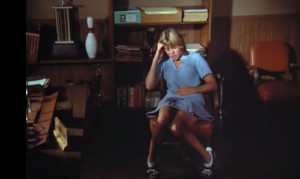 She was back in New York by the time the film premiered in 1973, her last known role before retirement being a rape victim on an episode of the Joseph Wambaugh-created show Police Story. While Tony Fletcher’s Keith Moon biography Dear Boy places Bang in London during the shoot of Ken Russell’s Tommy in 1974 (she was invited with Moonie to weekend with Oliver Reed at the boozing screen titan’s country estate, where they managed to shock even Reed with the home movies they made on Keith’s newly acquired video camera)[x], this is the last known record of her before she purportedly went back to school to study nursing under her maiden name of Joy Wener.
She was back in New York by the time the film premiered in 1973, her last known role before retirement being a rape victim on an episode of the Joseph Wambaugh-created show Police Story. While Tony Fletcher’s Keith Moon biography Dear Boy places Bang in London during the shoot of Ken Russell’s Tommy in 1974 (she was invited with Moonie to weekend with Oliver Reed at the boozing screen titan’s country estate, where they managed to shock even Reed with the home movies they made on Keith’s newly acquired video camera)[x], this is the last known record of her before she purportedly went back to school to study nursing under her maiden name of Joy Wener.
It’s worth mentioning that her departure from the business coincided with the death of Prescott Townshend, her co-star from her first film An Early Clue to the New Direction, which was screened at his memorial – marking the close of a circle and a new direction for a kinetic star with a smile that could melt a million hearts.
[i] village voice, Sept. 14, 1967.
[ii] “The Who in New York” by Keith Altham, Hit Parader September 1967
[iii] Jane Arden committed suicide in 1982 and her cinematic, print and stage legacy are really only being reappraised in recent years (notably since her triple bill of films with Jack Bond came out on DVD and Blu Ray in 2009)
[iv] “Making Movies, Some Notes” – by Fred Baker (http://www.filmsbyfredbaker.com/events2.html)
[v] Boomer Castleman, personal correspondence April 23 2012
[vi] http://www.williamapercy.com/wiki/images/Prescott_townsend.pdf
[vii] This chronology is based on the release dates of her 1972 films, but based on the quick turnaround time of Corman productions, it is entirely possible that Night of the Cobra Woman was shot last and released first.
[vii] Although it is corroborated (or perhaps echoed) here: http://www.notstarring.com/actors/hepburn-katharine
[viii] David Ehrenstein, http://movies.groups.yahoo.com/group/a_film_by/message/32692
[ix] David Ehrenstein, personal correspondence April 19, 2012
[x] Fletcher, Tony. Dear Boy.
A version of this article first appeared in Shindig #27 – buy the actual magazine and get their groovy layout, including a few nice, high-res pics not included here.
Thanks to Saul Levine, David Ehrenstein, Viva, Dick Blackburn and Boomer Castleman.
Other sources consulted for writing on Andrew Meyer’s An Early Clue to the New Direction include Wheeler Winston Dixon’s The Exploding Eye: A Re-Visionary History of 1960s American Experimental Cinema and John Dececco and Vern L. Bullugh’s Before Stonewall: Activists for Gay and Lesbian Rights in Historical Context.

 January 1, 2016
January 1, 2016 
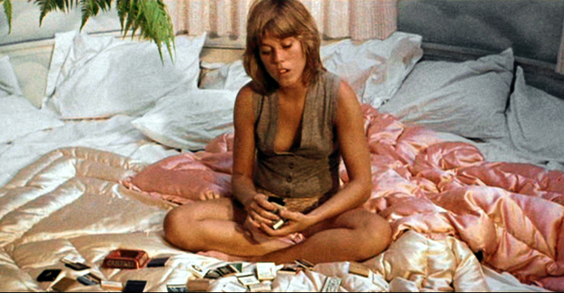
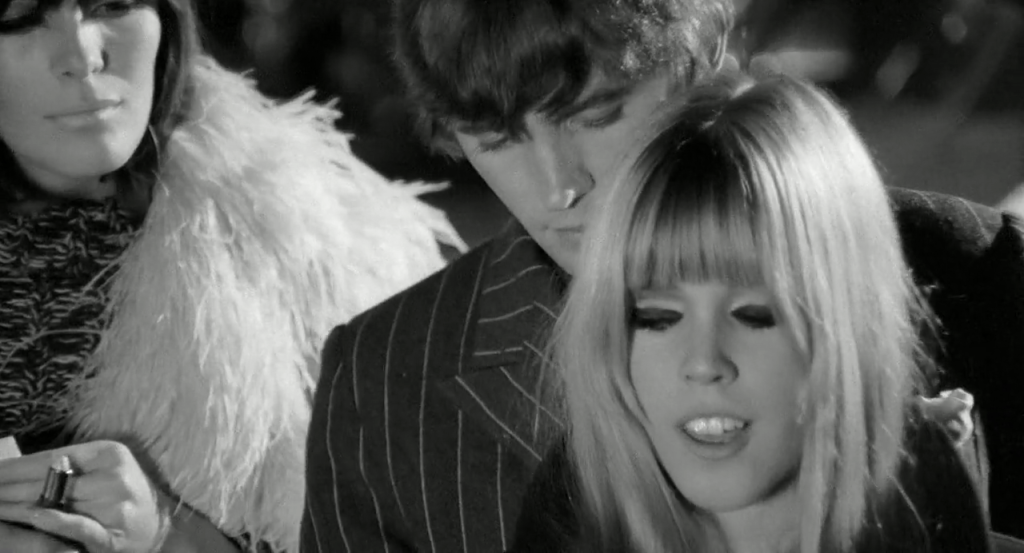
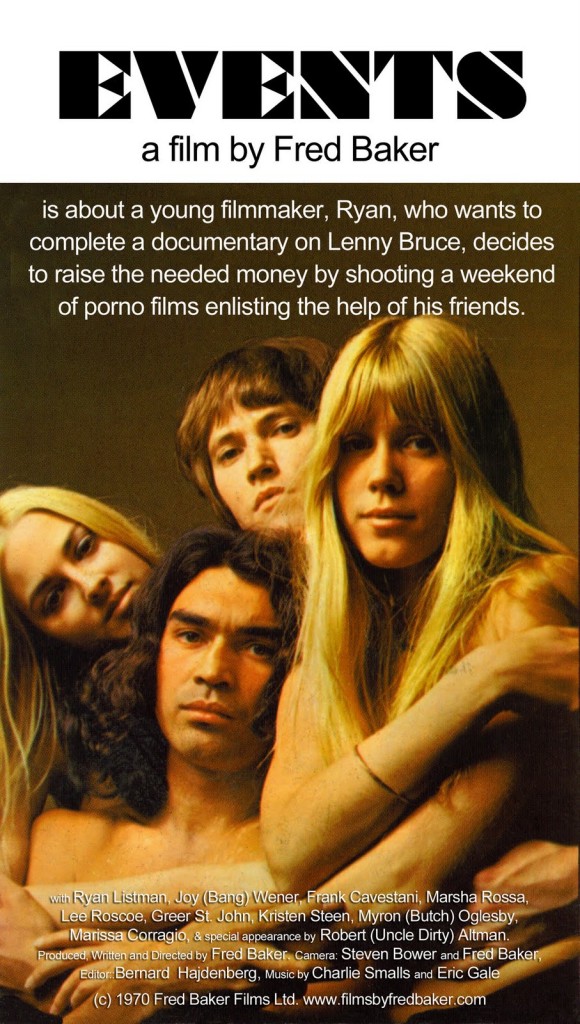
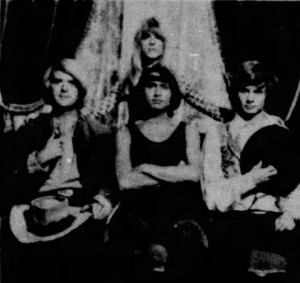
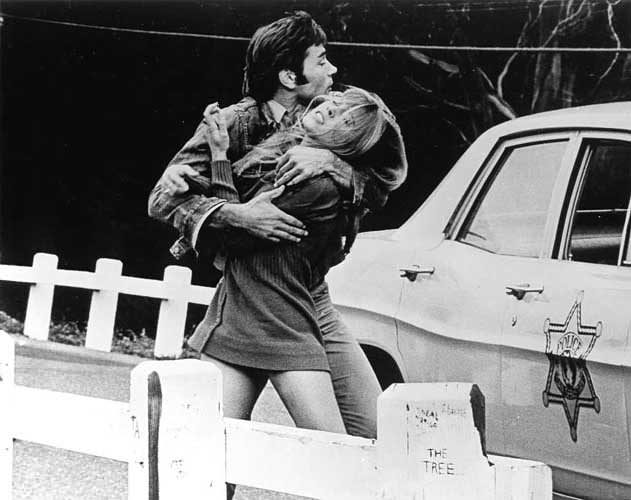
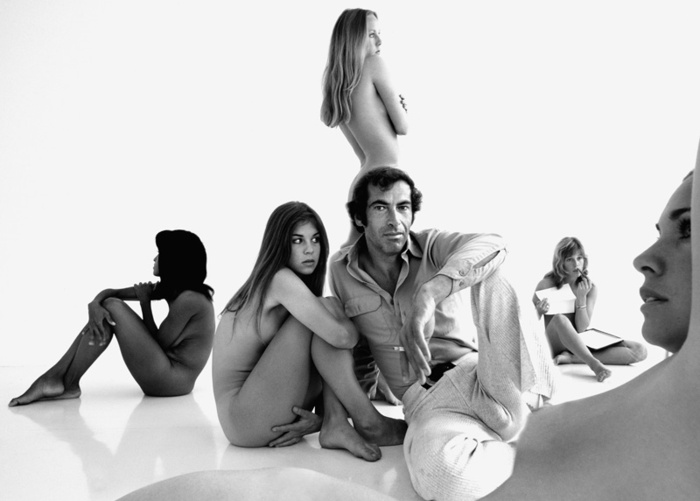
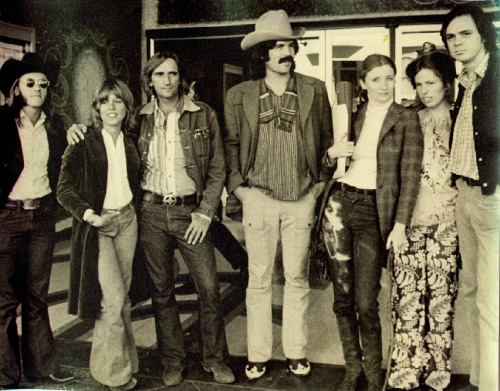
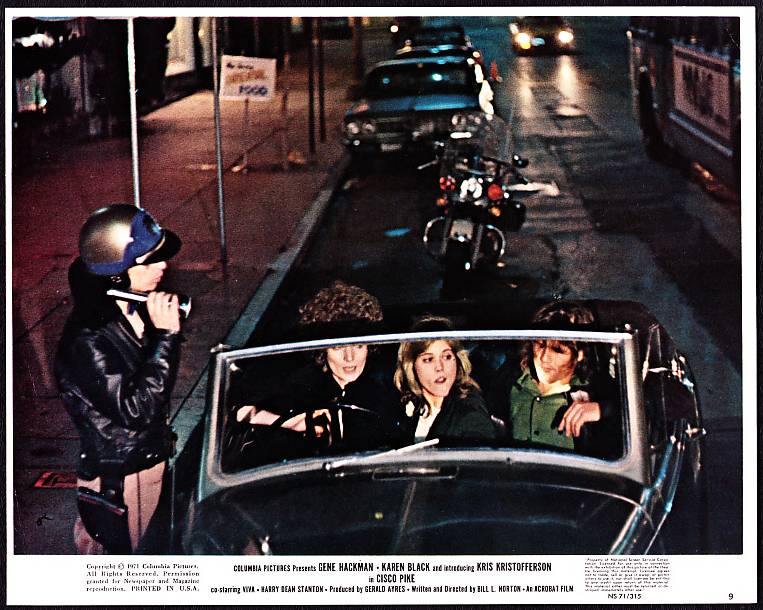
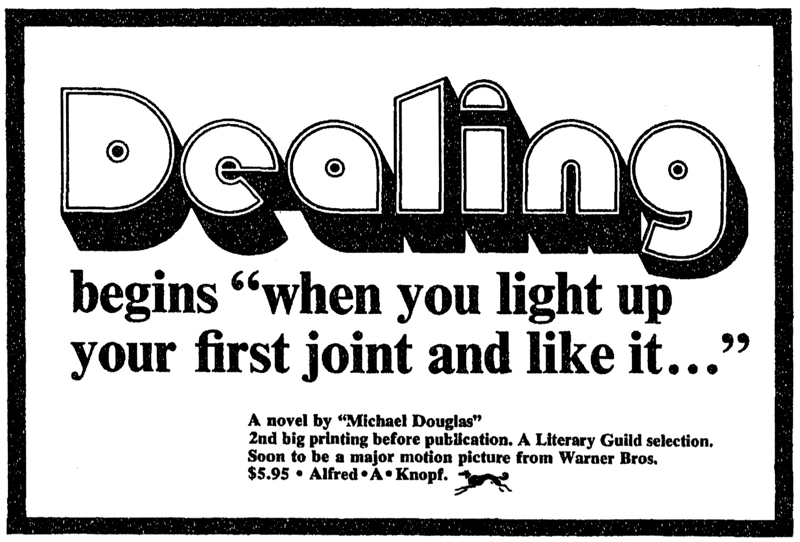
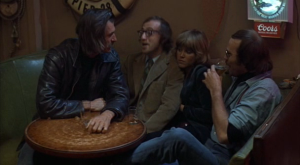
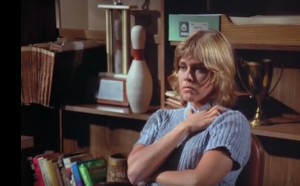

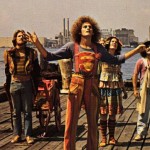
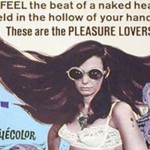
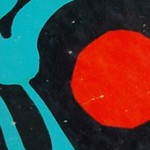



Comments
Very splendid article on Joy Bang that gives plenty of informative details about this lady and her career(including many of her other films that are often overshadowed by her best two known horror features).
9 yearss agoGreat facts it was nice to see at list some websites are talking about her. It was very sad that he did not make more movies as she was not that bad actress to dissipate so fast.
9 yearss agoI was a strong fan of hers back then, because of her looks and outrageously porny name. I didn’t see any of her films before Pretty Maids All in a Row, but I was already familiar with her from her TV work. I particularly remember her from an episode of Insight that I would love to see again.
8 yearss agoJoy Bang is also credited for her “Crazy Judy” role in an episode of Room 222 dating from 1971. I know this because it just aired today, 2/27/2017 on Inspire TV. Joy Bang was a very talented actress who could’ve made it big.
8 yearss agoWe grew up together in Manhattan, if she reads this: Evelyn, Me, Phillip and you and the small room we use to rent when we all in high school. Then when we met again in Ibiza in the summer of 1966, Dennis
7 yearss agoShe was a good actress who was cute and sexy. She had the great overbite and looked like the typical California girl. She did a commercial with my cousin’s ex-husband for DQ where they are in a convertible mustang. I hope she had a great life because I really had a crush on her.
6 yearss agoStrange, that nowhere in this amazing article is mentioned that Joy was one of the two topless girls seen in a very famous Jimi Hendrix poster that was shot in Hawaii in 1968…she also appears in other photos with Hendrix…but is never credited!…I am a fanatical Hendrix fan, and have wondered for many years about her!..Never knew she actually had a career as an actress…amazing stuff!
5 yearss agoTimelines are tough when it comes to television and film productions. Cisco Pike is a great example. The film was originally titled Dealer, that’s in the pre-production phase, while in production and even possibly right up to the first test screening in 1971. And the film was filmed in October and December of 1970, although I’m not aware if any further scenes were cut in 1971, it went through a period of revision through that year, as well as the new name of course, before it gained a full theatrical release in early 1972.
5 yearss agoAnd to give some context, Kristofferson was shooting scenes about a week after he got the script after the original lead dropped out.
Curiosity about Joy’s departure from the movie/TV industry brought me here. Thank you for placing this interesting informative essay for the public to read. I saw Joy in
“Adam-12 (TV Series)
Killing Ground (1973)”
Joy has led an interesting life in her early years. I hope she has had pleasant enjoyable years after that period.
5 yearss agoFrom reading these accounts of Joy Bang’s litany of non mainstream movies I will wager that their accumulated audience size in first-run theaters don’t equal the tens of millions who saw her brilliant guest appearance on an outstanding 1971 “Hawaii Five-O” episode about suicides of troubled-with-guilt U.S. military service men returning from the horrors of the Vietnam War. Joy Bang is perfectly cast as the college student, peace-movement activist girl friend of Michael Anderson, Jr., who himself gives an equally credible, good performance as brother to the most recent suicide (a jumper). Bang and Anderson, Jr. are quite believable as a couple and their plight is sympathetic — splitting for Canada as Anderson, Jr.’s been called to report to the (dreaded) draft board. . . . . Most guys would give anything to have a girl as supportive as Joy is (e.g., giving him her money to finance the move and doing just that, moving to Canada for the rest of her life due to her commitment to and love for Anderson, Jr.), in addition to her obvious, luminous femininity.
Latter’s well displayed when she’s wearing short, summer dresses — ideal wear in the islands — while riding on the back of Anderson, Jr.’s modest motor cycle. Her California-Hawaii, naturally-tanned, golden limbs and hair can’t help but stand out.
‘To Kill or Be Killed,’ written by Anthony Lawrence, aired Jan. 13, 1971. The last six minutes are unlike any other conclusion of the other 280 “Hawaii Five-O” episodes. (ed. – make certain you see the 51-minute, full length, network cut — via streaming or DVD, not a butchered, 41-minute syndicated print.)
She filmed this the previous summer, 1970, before starting “Cisco Pike” in Oct.
4 yearss agoMention was made of her shooting the Jimi Hendrix poster in Hawaii in 1968. So we gather this was not her first opportunity experiencing the Aloha Spirit.
Another filming location that served her well — and all involved plus the audience — was Monterey, Calif. where in 1969 she filmed the pilot for “The Psychiatrist,” ‘God Bless the Children.’ I caught that on YouTube several years ago and was so impressed with it and her work. Although looking at it today it seems ‘dated,’ unlike the “Five-O” guest shot. And more depressing.
. . . While much has been written about her looks I will propose that Joy could play ’60s-’70s sexpot Jo Ann Harris’s less voluptuous, slightly-less pretty sister. They both have an over-bight and wear their hair in a similar, relatively short length. Both have sex appeal. Re Joy’s, if her videtaped sexcapades with Keith Moon could shock the definitive hound, Oliver Reed, that thought alone is going to get a million guys’ imaginations and testosterone racing into overdrive.
“Mahalo” to the author of this profile of Joy Bang — and for the opportunities to comment. I enjoyed it and them, and now sharing my feedback.
Finally, on Joy Bang’s behalf I hope that her near half century out of the limelight has brought peace, rewards, satisfaction and happiness. And if she finds any errors in this look at her career and/or the Comments, that she will correct them and, hopefully, provide her audience an update.
Thank you so much for this, gonna look for that episode now!!
4 yearss agoOne more thing..in approx.1972. Joy made a very nice, straight-forward TV advertisement for roll-on deodorant!…She looked properly innocent and sweetly sexy, responding to an off-camera commentator questioning her as to her needs in a roll-on deodorant!…I found it on Youtube…fun to watch her play a nice, normal-type young woman for a change!…Wonder how much she got paid for that advert!..I felt kind of bewildered watching her..kind of felt like I did when seeing the famous Porno star Marilyn Chambers, on that box of Ivory Soap, holding a baby up close..just a short while before she bwgan her X-rated sojourn.
4 yearss agoI just stumbled on an interview that Roger Ebert did with Joy!..It is from April of 1971…Ebert comments about how refreshingly direct she was in her responses…one can sense that, at the age of 22, she was already becoming tired/jaded with her busy young life!…she was recently divorced from her first husband, and felt that after seeing, and partaking in, a sort of fast-lane existence, she was looking forward to perhaps marrying again, having a couple of kids…she no longer felt the need to have attention, etc…so it would seem that, within a year or so of this interview, she took action to change her life…it would be so interesting to see how she experienced the next fifty years!…she would be around 75 now, is apparently still alive…but maybe very done with any publicity.. Like others, I hope she has been a happy person…what a life!..go go dancer, Rock Groupie of sorts, lover of Keith Moon and Jimi Hendrix, etc..all by the age of 22?..whoosh!
4 yearss agoI’d be interested in her Hollywood memoir. Witness to history.
2 yearss agoPretty good article!
3 yearss agoThank you! If you are the Paul Bang referenced please let me know if you care to correct anything! 🙂
3 yearss agoAs I type this, I’m watching “Messiah of Evil” for the first time in 49 years, since it came out in 1973 when a buddy & I saw it at the La Mirada Drive-In in Southern California … with “The Exorcist.” We dropped acid! Whoa! :O
Well, done, Keir-La Janisse! I love & appreciate all the research & passion you put into your biop retrospective. Mazal tov!
2 yearss ago